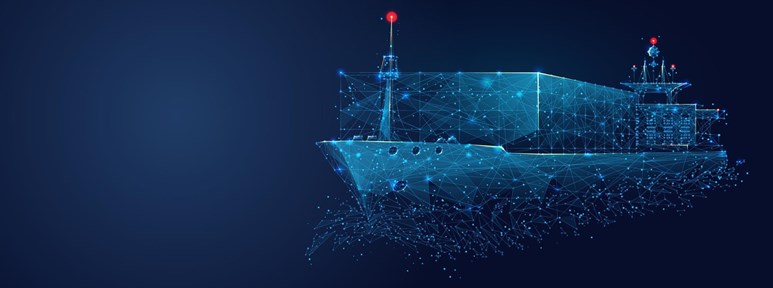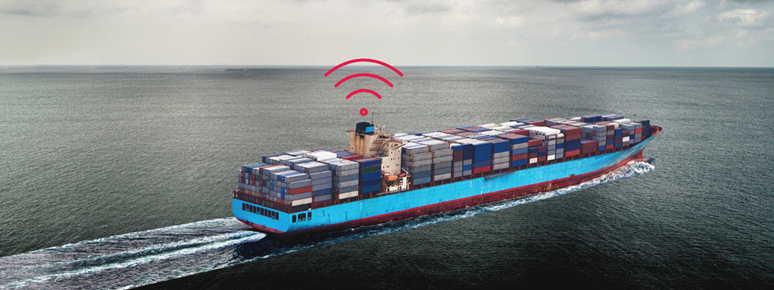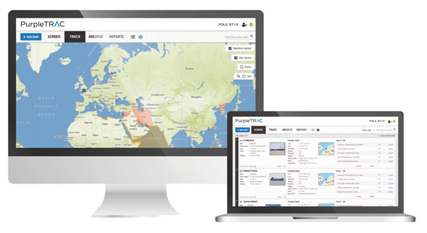The US, UK, and other national regulators have recently issued sanctions advisories to the wider maritime industry, addressing illicit shipping and sanctions evasion practices. Several deceptive shipping practices are identified, with AIS disablement and manipulation given focussed attention. With the maritime industry considered as the key artery for sanctions evasion globally, a critical need has developed for all stakeholders to enforce persistent ship tracking and transparency, along with dark ship detection monitoring and, if in the vicinity of high-risk areas, predictive behavioural analysis.

When is a ship “dark”?
A broad swathe of the maritime sector is predisposed to using ubiquitous AIS vessel tracking services provided today by several vendors globally. In a perfect world, AIS would provide effective and sufficient ship identification and tracking. However, in reality AIS equipment can fail, be switched off from onboard a ship, and be deliberately spoofed and falsified from onboard or ashore. In addition, correctly functioning signals can be missed by satellite-AIS service vendors, due to signal collision in high-density shipping areas. Fundamentally, AIS has vulnerabilities that may result in the accidental or deliberate loss of AIS ship position data – creating a “dark” ship.
If a dark ship is operating in proximity to known high-risk transshipment areas and proven to be linked with a sanctioned entity, the owner, operator, manager, charterer and any associated stakeholder providing commercial services is at substantial risk, both financial and reputational. In this respect, maritime-KYC is indispensable rather than merely an added bonus.
Ship location transparency, therefore, is a key maritime-KYC component, which requires optimal performance “persistent tracking” provided by the aggregation of secure and reliable Inmarsat or Iridium positional data with AIS positional data. This combination creates a multi-source, hybrid tracking solution.
Hybrid tracking is a specialised, patented process that Pole Star has employed for several years and has successfully implemented within many banks and commodity trading firms, progressive flags, and leading shipping companies, to de-risk their shipping operations and ensure compliance.
Pole Star’s PurpleTRAC solution
Pole Star’s patented hybrid tracking technology is integrated within our award-winning PurpleTRAC tracking and sanctions screening solution.
As the world’s first commercial web-based vessel tracking provider, we have been utilising Inmarsat C, IDP, and Broadband, along with Iridium communications services, to track and monitor vessels for over twenty years, serving over 60 Maritime Administrations (Flags), more than 1,200 commercial marine companies, and over 120 banks and commodity trading firms across the supply chain. PurpleTRAC is the only single point service that can provide maritime and ship-centric sanctions and risk screening, supported by our unique hybrid tracking capability.

AIS: What is it and what are the drawbacks?
What is AIS?
- The Automatic Identification System is a VHF (very high frequency) radio tracking system used by ships and vessel traffic services to identify and locate surrounding ships, for the purpose of collision avoidance and sea traffic management. It is a one-way transmission system and today is widely used as an inexpensive, commercially available, open source vessel tracking system.
- The IMO AIS regulation requires equipment to be fitted aboard all ships of 300 gross tonnes and upwards engaged on international voyages, cargo ships of 500 gross tonnes and upwards not engaged on international voyages, and all passenger ships irrespective of size.
What are the main drawbacks of AIS?
- It is susceptible to data collision (loss of position reports) and data manipulation such as: spoofing, hijacking the AIS channels of existing vessels, creating fake vessels, and triggering false SOS or collision alerts.
Are there exceptions regarding turning off AIS reporting?
- The IMO and various regulators have updated guidance to emphasise the need for ship transparency and for the AIS to be on and reporting. However, it remains at the discretion of the ship master that, if their ship is considered to be under threat, its AIS can be switched off to protect the vessel from detection.
Inmarsat: What is it & what are the drawbacks?
Firstly, is Inmarsat the only alternative?
- No, other secure satellite communications alternatives include Iridium.
What is Inmarsat?
- Inmarsat is a satellite network established by the International Maritime Organisation (IMO) in 1979. It is a two-way (bi-directional) system and today used for safety at sea communications, including Broadcast safety bulletins, distress and security alerts, along with voice and data communications.
- Inmarsat was the first satellite operator to meet the stringent requirements of the Global Maritime Distress and Safety System (GMDSS) and the International Civil Aviation Organisation (ICAO) for global safety communications. Today, Iridium is also approved for GMDSS use.
- Inmarsat ‘Sat-C’ transceivers utilise a secure L-Band service for message/position report delivery. Iridium transceivers operate in much the same way.

What is the difference between Inmarsat and the LRIT program?
Inmarsat Sat-C-based ship tracking and LRIT are technically closely aligned, however they are very different with regard to data ownership and governance. The IMO LRIT regulation and programme prescribes a secure infrastructure whereby the LRIT data provided to Flags, and across coastal states, is entirely confidential. The Inmarsat satellite network and Sat-C communication service, which supports the LRIT program, has been available and provided to the wider shipping sector by Pole Star for 22 years.
Long Range Tracking and Identification (LRIT) is an IMO SOLAS regulation specified to provide member states with a secure and confidential global tracking system for ships of 300 GT and above engaged on international voyages. LRIT information is managed through a system of National, Regional, and Cooperative LRIT Data Centres coordinated through the International Data Exchange and Data Distribution Plan. The regulation dictates that LRIT position reports should be transmitted every six hours to the “home” LRIT Data Centre and on request to authorised coastal states, as well as Search and Rescue agencies. LRIT position report intervals can be modified by the Flag and authorised coastal states up to every 15 minutes. The LRIT information that ships are required to transmit includes position data, alongside time and date.
Inmarsat / Iridium is used for LRIT technical compliance, along with the provision of similar commercial ship tracking services to shipping companies and other entities with a wider regulatory right to track.
What is “dark ship AIS detection and analysis”?
AIS dark ship detection is, in theory, straightforward, being the simple action of identifying that a ship has gone dark. Various automatic non-reporting sensitivities can be applied, such as the ship has not transmitted within its standard reporting cycle, or has not reported for more than 6 hours, with the latter reflecting the minimum time needed to undertake a transshipment operation. A dark ship always poses a risk.
By extension, AIS dark ship analysis attempts to predict ship movements in the absence of AIS positional information, based on last known speed and heading, along with ship type (cargo), draught-change, and previous trading patterns, among other potential parameters. It is a complex, time-consuming and, as a result, costly process with uncertain outcomes.
At Pole Star, we provide persistent ship tracking through our patented hybrid tracking technology, to establish real-time, accurate ship location that works even when the AIS is unavailable. The solution provides redundancy and allows for the elimination of what would be a significant level of dark ship false-positives occurring with the use of AIS alone. The complete failure of hybrid-tracking is highly unlikely outside of deliberate deception, therefore, the persistent tracking of ships should be part of any compliance program. As such, working with Pole Star as your specialist technology partner will protect against inadvertent sanctions misdemeanours and contribute to building a safer, more secure, and compliant supply chain.

What upcoming features are going to be included in PurpleTRAC?
- Extended AIS monitoring: Review previous 24 months of AIS position data.
- Dark ship analysis & tracking: Tracking using blended-tracking technology (AIS & Inmarsat) to minimise position reporting gaps.
- Customisable position gap analysis: Report on & view additional details when a ship stops reporting (including duration of gap).
- STS risk monitoring: Monitor vessels that stop reporting during STS transfers (duration of non-reporting period, draught before and after reporting gap).
- Cargo change calculation: Monitor changes in ship draught.
- OFAC and user defined High Risk Area monitoring: Define high risk areas, monitor ships that stop reporting inside these zones.
- Flag hopping monitoring.
- Company change monitoring.
Get further information on PurpleTRAC here.
Read ‘Playing Hide & Seek at Sea: A Deep Dive into AIS’ here.